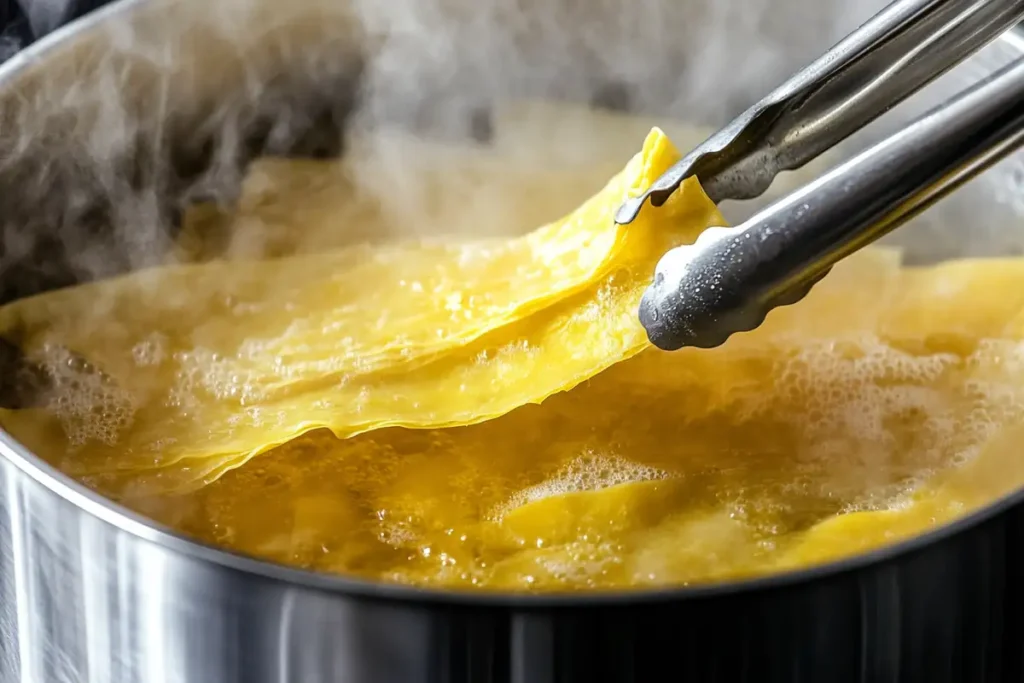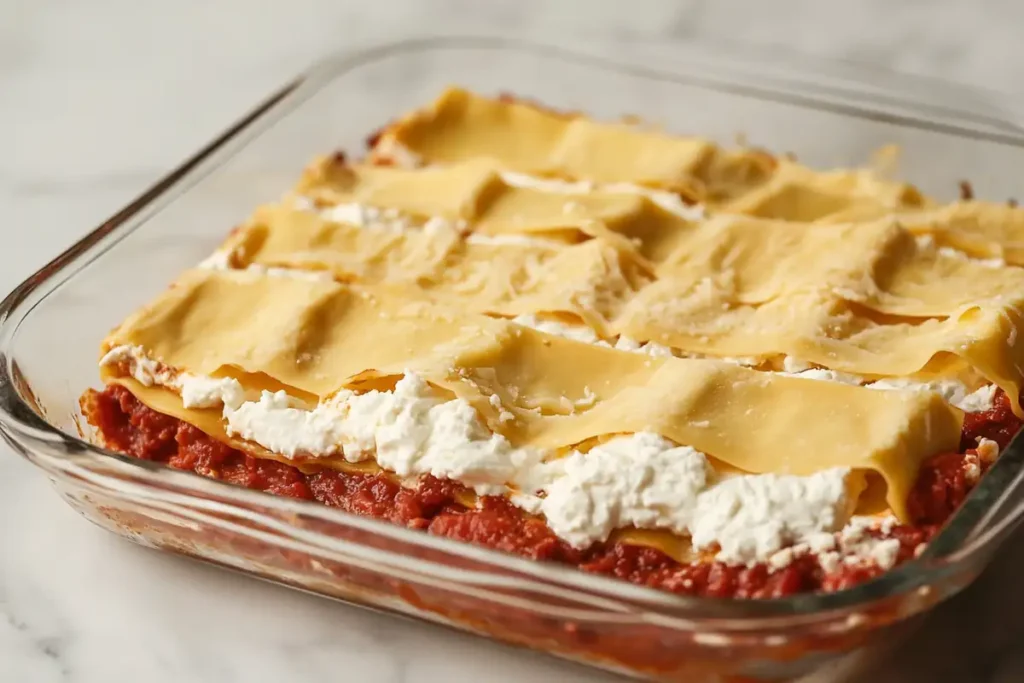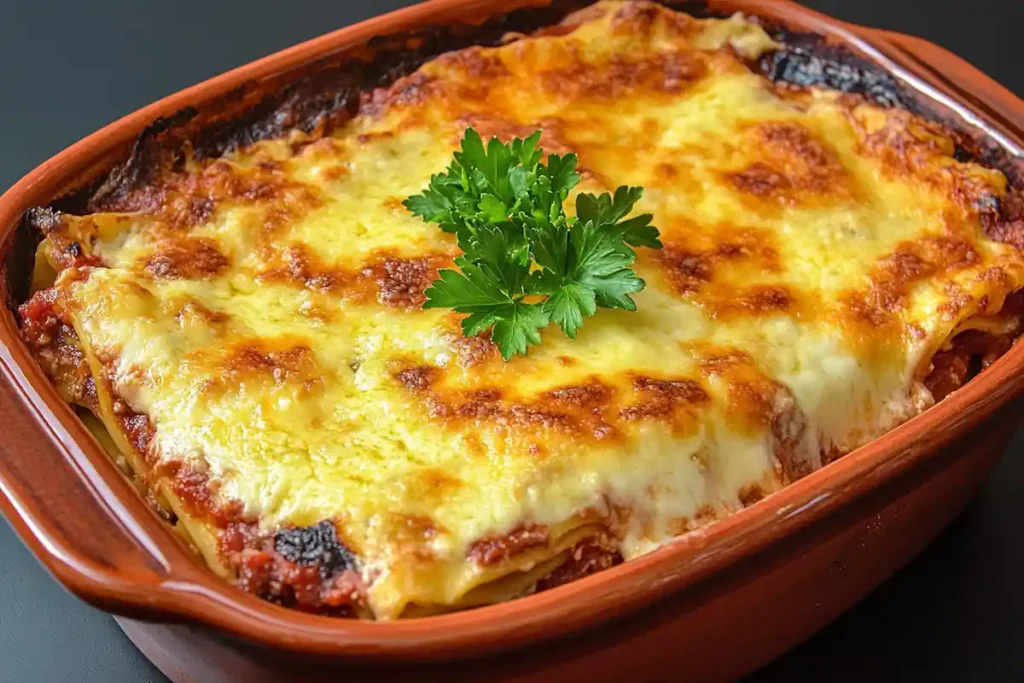Barilla lasagne sheets are a favorite for many home cooks and food enthusiasts, offering both convenience and quality for creating delicious layered pasta dishes. Whether you’re tackling a traditional recipe or experimenting with something new, these sheets simplify the process while delivering impressive results. From preparation tips to layering techniques and mouthwatering recipes, this guide has everything you need to make the most of Barilla lasagne sheets.
Table of Contents
Introduction to Barilla Lasagne Sheets
Barilla lasagne sheets are a versatile and trusted choice for making lasagne, offering options like traditional, oven-ready, and gluten-free varieties. Known for their quality and ease of use, these sheets simplify the process of creating layered pasta dishes without compromising on flavor or texture. Whether you’re preparing a classic recipe or experimenting with new ideas, Barilla lasagne sheets provide a sturdy and delicious base for any meal.
Types of Barilla Lasagne Sheets
Barilla lasagne sheets cater to various preferences and cooking styles, making them a versatile choice for any lasagne recipe. Let’s explore the different types available and their unique features.
Traditional Barilla Lasagne Sheets
The traditional lasagne sheets are a staple for classic recipes. Made from durum wheat semolina, they boast a firm texture that holds up well in layered dishes. To use them effectively, these sheets typically require boiling before layering.
Traditional sheets are absolutely perfect for recipes that call for a chewy yet tender bite, especially since their texture pairs beautifully with rich, homemade sauces. Additionally, if you’re aiming for an authentic Italian experience, then traditional Barilla lasagne sheets are undoubtedly your best bet.
Oven-Ready Barilla Lasagne Sheets
For busy cooks or those seeking convenience, oven-ready lasagne sheets are a game-changer. These sheets eliminate the need for boiling, saving both time and effort. Simply layer them directly in your dish with adequate sauce to ensure they soften and cook evenly.
The secret to success with oven-ready sheets lies in moisture. Since they rely on the liquid from sauces to cook, it’s essential to use enough sauce between layers. With this no-boil option, even beginners can achieve a restaurant-quality lasagne.
Gluten-Free Barilla Lasagne Sheets
For individuals with gluten sensitivities or those following a gluten-free diet, Barilla offers gluten-free lasagne sheets. Made from ingredients like corn and rice flour, these sheets are crafted to mimic the texture and taste of traditional pasta.
Gluten-free lasagne sheets perform beautifully in baked dishes, maintaining their structure without becoming mushy. Whether you’re preparing a classic lasagne or experimenting with a lighter, vegetable-based recipe, this option ensures everyone at the table can enjoy a hearty meal.
Each type of Barilla lasagne sheet offers unique benefits, allowing you to choose the best option for your recipe or dietary needs. With these varieties, making lasagne has never been more accessible or enjoyable!
Preparing Traditional Barilla Lasagne Sheets
Traditional Barilla lasagne sheets are beloved for their firm, classic texture, but they require a little preparation before layering into your dish. Let’s break down the boiling process and key tips to ensure flawless results.
Boiling Instructions for Traditional Barilla Lasagne Sheets
To prepare traditional lasagne sheets, begin by boiling them. Follow these steps for the best outcome:
- Boil a Large Pot of Water: Fill a pot with plenty of water to prevent overcrowding. Add a generous pinch of salt for flavor, similar to what you’d use for regular pasta.
- Add the Lasagne Sheets Gradually: Place the sheets one at a time into the boiling water to prevent sticking. Avoid overcrowding; cook in batches if necessary.
- Stir Gently: Using a wooden spoon or tongs, stir the sheets occasionally to ensure they don’t stick together.
- Cook for 4–5 Minutes: While Barilla sheets are sturdy, a few minutes of boiling softens them just enough for baking while maintaining their structure.
- Transfer to an Ice Bath: To halt cooking and preserve the texture, transfer the sheets immediately to a bowl of ice water using tongs.

Tips to Prevent Sticking
Sticky lasagne sheets can complicate layering, so here are some handy tricks:
- Add Oil to the Boiling Water: A small drizzle of olive oil in the pot can help reduce sticking.
- Lay Sheets Flat: After boiling, lay the sheets flat on a clean kitchen towel or parchment paper. Avoid stacking them directly.
- Use Enough Sauce: During layering, ensure you’re using enough sauce between the sheets. This prevents them from clumping together during baking.
Using Barilla Oven-Ready Lasagne Sheets
Barilla oven-ready lasagne sheets are a convenient option that skips the boiling step altogether, making them ideal for those who want to save time without compromising on flavor. However, using them effectively requires some know-how to ensure they cook evenly and absorb the flavors of your dish.
No-Boil Convenience of Oven-Ready Lasagne Sheets
Oven-ready sheets are pre-cooked and dehydrated, designed to soften and cook as they absorb moisture during baking. Here’s how to make the most of their no-boil feature:
- Prepare a Moist Sauce: Whether you’re using a marinara, béchamel, or creamy cheese sauce, ensure it’s not too thick. The extra moisture is crucial for rehydrating the sheets.
- Layer Generously: Add a generous amount of sauce to each layer, fully covering the sheets. Any exposed edges might dry out during baking.
- Follow Recommended Baking Times: Barilla suggests baking your lasagne at 375°F (190°C) for 25–30 minutes when using oven-ready sheets, but adjust based on your specific recipe.

Ensuring Proper Moisture Levels
To guarantee soft and fully cooked sheets, consider these tips:
- Start with a Sauce Base: Always spread a layer of sauce on the bottom of your dish before placing the first sheet. This prevents the bottom layer from sticking or overcooking.
- Cover with Foil: Cover your dish with aluminum foil during the first half of baking. This traps steam, helping the sheets cook evenly. Remove the foil in the final 10 minutes for a golden, bubbly top.
- Test for Doneness: After baking, insert a knife or skewer into the center of the lasagne. If it slides through easily, the sheets are cooked.
Layering Techniques for Lasagne
Layering is truly the heart of a perfect lasagne, as it’s where textures and flavors seamlessly blend together to create a mouthwatering dish. Furthermore, with Barilla lasagne sheets, mastering this essential art not only ensures even cooking but also guarantees balanced ingredients and a visually appealing presentation.

Spreading the Sauce Evenly
The foundation of great lasagne starts with a well-spread sauce. Begin with these steps:
- Start with the Base: Spread a thin, even layer of sauce be it marinara or béchamel at the bottom of your baking dish. This prevents the first layer of lasagne sheets from sticking.
- Cover Every Sheet: As you layer the sheets, ensure they are entirely coated with sauce. Exposed edges can dry out or become too crisp during baking.
- Alternate Sauces for Depth: If your recipe uses multiple sauces, alternate them between layers to add depth of flavor. For instance, pair a tomato-based sauce with a creamy béchamel.
Arranging the Sheets Properly
Properly arranged lasagne sheets ensure the dish holds its structure and cooks evenly:
- Overlap Slightly: When placing Barilla lasagne sheets, allow them to overlap by about half an inch. This prevents gaps that might cause uneven cooking.
- Trim to Fit: For smaller or oddly shaped baking dishes, trim the sheets with kitchen scissors for a snug fit. Use the trimmings to patch any gaps.
- Create Multiple Layers: Aim for at least four to five layers of sheets for a hearty and satisfying lasagne.
Adding Cheese and Fillings
Cheese and fillings are where your lasagne gets its richness and personality. Here’s how to layer them like a pro:
- Spread Evenly: Use a spoon or spatula to evenly distribute ricotta, mozzarella, or any chosen cheese mixture across each layer.
- Add Fillings Strategically: Distribute fillings like cooked ground meat, sautéed vegetables, or spinach uniformly, ensuring every bite is packed with flavor.
- Top Generously: Finish with a hearty sprinkle of grated Parmesan or shredded mozzarella to create a golden, bubbly crust.
Cooking Times and Temperature
Baking your lasagne to perfection is, without a doubt, the final step in bringing all the flavors and textures together seamlessly. Moreover, with Barilla lasagne sheets, ensuring that the cooking time and temperature are just right not only guarantees a dish that’s evenly cooked but also makes it tender, flavorful, and irresistibly golden on top.
Recommended Baking Duration
The baking time for lasagne largely depends on the type of sheets you’re using and the recipe. Here’s a general guideline:
- Traditional Barilla Lasagne Sheets: When pre-boiled, bake your lasagne at 375°F (190°C) for about 30–40 minutes. This duration allows the layers to meld without overcooking the pasta.
- Oven-Ready Barilla Lasagne Sheets: These sheets typically require 25–30 minutes of baking at the same temperature. Since they absorb moisture during cooking, the shorter baking time prevents dryness.
- Gluten-Free Barilla Lasagne Sheets: Gluten-free sheets may need slightly less time, around 20–25 minutes, due to their unique composition. Keep an eye on them to avoid over-baking.
Signs of Doneness
Knowing when your lasagne is perfectly baked can make all the difference. Look for these indicators:
- Bubbling Sauce: The sauce should bubble around the edges of the dish, a sign that the sheets are cooked through and the layers are well-combined.
- Golden-Brown Top: A crispy, golden-brown top layer of cheese indicates the lasagne is ready to come out of the oven. If needed, broil for an additional 1–2 minutes to achieve this.
- Knife Test: Insert a knife or skewer into the center. If it slides through easily without resistance, the lasagne sheets are fully cooked.
Pro Tips for Baking Success
- Let It Rest: After removing the lasagne from the oven, let it rest for 10–15 minutes. This helps the layers settle and makes slicing easier.
- Cover and Uncover Strategically: For the first half of the baking time, cover the dish with foil to trap moisture. Remove the foil during the final 10 minutes to brown the cheese topping.
- Don’t Rush: Resist the urge to crank up the heat to save time. Cooking lasagne slowly and evenly ensures a more flavorful and perfectly textured dish.
Common Mistakes to Avoid
Even with the best ingredients like Barilla lasagne sheets, small missteps can impact the final result. Learning to avoid these common mistakes will elevate your lasagne to perfection every time.
Overlapping Sheets Incorrectly
Improperly overlapping your lasagne sheets can lead to uneven cooking or a dish that falls apart when served. Here’s how to avoid this mistake:
- Avoid Excessive Overlapping: While a slight overlap is necessary to create a seamless layer, too much overlap can result in thick, undercooked sections.
- Trim Sheets if Necessary: Always trim sheets to fit your baking dish neatly, especially for smaller or irregularly shaped pans.
Insufficient Sauce Quantity
One of the most frequent issues is not using enough sauce, which leaves the sheets dry and chewy instead of tender and moist. To ensure perfect results:
- Generously Coat Each Layer: Each sheet should be entirely covered with sauce, leaving no dry edges.
- Account for Moisture Needs: Oven-ready sheets require extra sauce to soften and cook properly. For these, opt for a slightly thinner sauce consistency.
Skipping the Resting Period
Pulling your lasagne straight out of the oven and slicing it may seem tempting, but it’s a rookie mistake. Why?
- Allows Layers to Set: Resting your lasagne for 10–15 minutes allows the layers to firm up, preventing the ingredients from sliding apart when cut.
- Enhances Flavor: The resting period helps the flavors meld together for a richer taste in every bite.
Using the Wrong Dish Size
The size of your baking dish matters more than you might think. A dish that’s too deep or shallow can throw off the cooking time and texture.
- Choose the Right Depth: A dish that’s about 2–3 inches deep is ideal for even layering and thorough cooking.
- Avoid Overfilling: Leave at least half an inch of space at the top to prevent bubbling sauce from spilling over.
Alternative Recipes Using Barilla Lasagne Sheets
Barilla lasagne sheets are versatile and can be used for more than just the classic lasagne. Whether you’re catering to vegetarians, embracing gluten-free options, or experimenting with unique dishes, these alternative recipes are sure to inspire.
Vegetarian Lasagne
Vegetarian lasagne is a crowd-pleasing dish packed with fresh vegetables, herbs, and cheese. Here’s how to make it shine:
- Ingredients: Zucchini, spinach, bell peppers, mushrooms, marinara sauce, ricotta cheese, mozzarella, and grated Parmesan.
- Steps:
- Sauté your vegetables until tender.
- Alternate layers of vegetables, Barilla lasagne sheets, marinara sauce, and cheeses.
- Bake at 375°F (190°C) for 25–30 minutes until the cheese is golden and bubbly.
This recipe is perfect for family dinners or when catering to vegetarian guests.
Gluten-Free Lasagne
Barilla’s gluten-free lasagne sheets allow you to create a comforting pasta dish without sacrificing texture or flavor. Here’s a twist on the classic:
- Ingredients: Gluten-free Barilla lasagne sheets, ground turkey, marinara sauce, ricotta, and mozzarella cheese.
- Steps:
- Brown the ground turkey with garlic and onions, then mix it with marinara sauce.
- Layer the gluten-free sheets with the turkey mixture, ricotta, and mozzarella.
- Bake for 20–25 minutes at 375°F (190°C).
This recipe caters to those with gluten sensitivities while offering all the flavors of a traditional lasagne.
Lasagne Soup
For a creative twist, transform your lasagne sheets into a hearty and comforting soup:
- Ingredients: Barilla lasagne sheets (broken into pieces), marinara sauce, beef or veggie broth, Italian sausage, ricotta, and fresh basil.
- Steps:
- Brown Italian sausage, then add marinara sauce and broth.
- Simmer broken lasagne sheets in the mixture until tender.
- Serve with a dollop of ricotta and fresh basil on top.
This one-pot recipe is perfect for chilly days or when you’re craving lasagne without the baking.
FAQs About: How to Use Barilla Sheets
Do I need to boil Barilla oven-ready lasagne sheets?
No, you absolutely don’t need to boil Barilla oven-ready lasagne sheets. In fact, these sheets are pre-cooked and specifically designed to soften as they bake by absorbing moisture from the sauces in your dish. Therefore, to achieve the best results, just make sure you use enough sauce to thoroughly cover the sheets completely.
How do I store unused lasagne sheets?
Store unused lasagne sheets in an airtight container or their original packaging, tightly sealed. Keep them in a cool, dry place, away from heat and moisture, to preserve their texture and quality.
Are Barilla lasagne sheets suitable for vegetarians?
Yes, most Barilla lasagne sheets are vegetarian-friendly, made primarily from durum wheat semolina. However, it’s always a good idea to check the ingredient list, especially for dietary preferences or restrictions.
Can I freeze lasagne made with Barilla sheets?
Absolutely! Lasagne made with Barilla sheets freezes well. Assemble the dish and either bake it partially before freezing or freeze it unbaked. Wrap it tightly with plastic wrap and aluminum foil to prevent freezer burn.
Conclusion
Barilla lasagne sheets are the perfect foundation for creating delicious and versatile lasagne dishes. Whether you choose traditional, oven-ready, or gluten-free varieties, these sheets make cooking easier while delivering authentic flavors and textures. By following the tips and techniques in this guide, you can confidently prepare and enjoy lasagne that’s satisfying, beautiful, and sure to impress.

